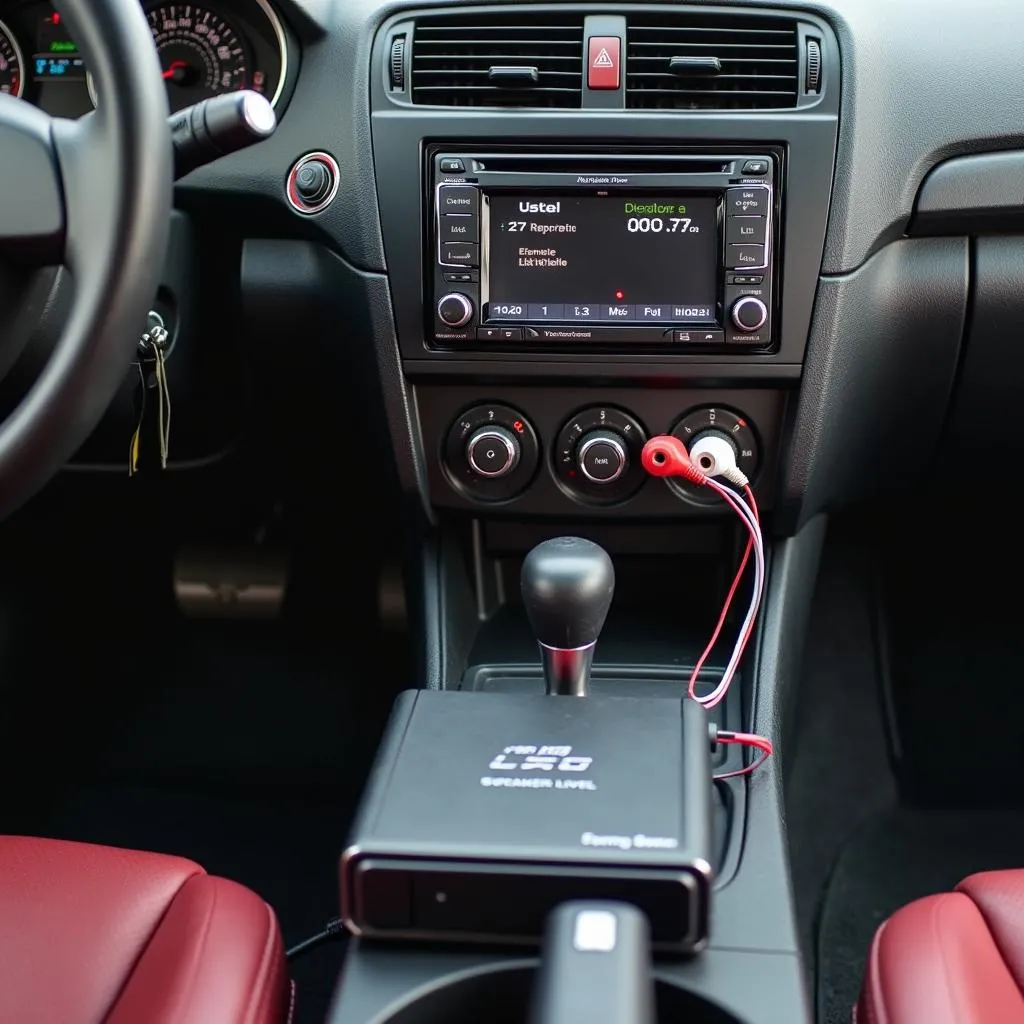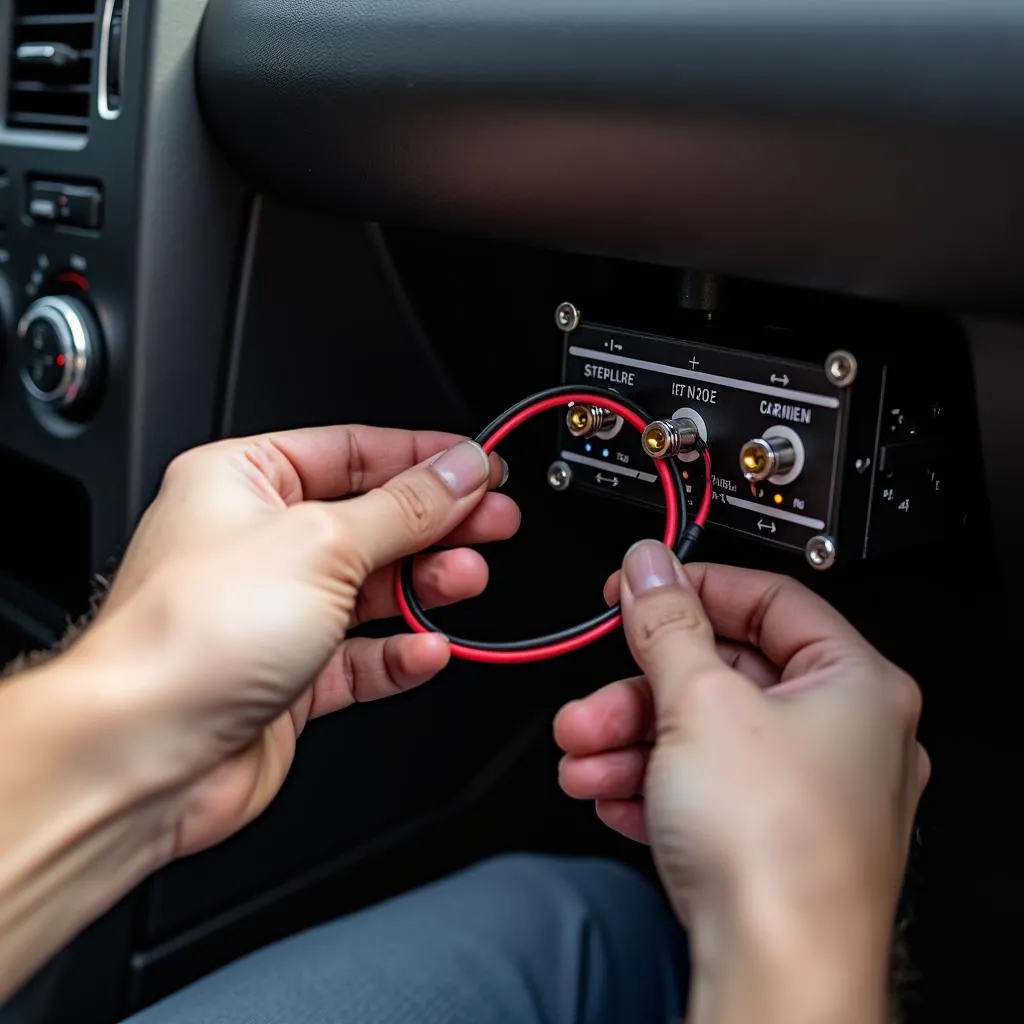So you love your car but not the sound system? You’re not alone. Many factory car radios just don’t cut it for audiophiles or casual listeners who crave a richer sound. The good news is you don’t need to replace your entire system to enjoy powerful, clear audio. Adding an amplifier can significantly boost your car audio experience, and contrary to what some might think, it’s entirely doable even with a factory-installed radio.
Understanding the Why and How of Car Amplifiers
Before diving into the installation process, let’s understand why you might need a car amplifier and how it works in conjunction with your factory radio.
Why You Need a Car Amplifier
Factory car radios often come equipped with built-in amplifiers. However, these are generally low-powered and designed for basic audio output. An aftermarket amplifier provides several key advantages:
- Increased Power Output: Delivers a much-needed power boost to your speakers, resulting in louder and clearer sound, especially at higher volumes.
- Enhanced Sound Quality: Provides cleaner power, reducing distortion and improving the clarity and depth of both music and spoken audio.
- Improved Bass Response: Drives your subwoofer (if you choose to install one) more effectively, delivering deep, impactful bass.
Bridging the Gap: How Amps Work with Factory Radios
You might wonder how to connect an amplifier designed for aftermarket systems to your factory radio. The answer lies in devices called Line Output Converters (LOC) or by utilizing speaker-level inputs if the amplifier is equipped. These handy tools convert the high-level speaker signals from your factory radio into low-level RCA outputs that amplifiers require.
 Car audio system with amplifier
Car audio system with amplifier
Common Challenges When Adding an Amp to a Factory System
While installing an amp can significantly improve your car audio, it’s not without its challenges:
- Identifying the Correct Wiring: Factory wiring harnesses can be complex. You’ll need to correctly identify the power, ground, speaker, and remote turn-on wires for your specific make and model.
- Limited Space: Cars weren’t designed with aftermarket amplifiers in mind. Finding ample space for the amplifier and routing the wiring neatly can be tricky.
- Potential for Noise: Improper grounding or wiring can introduce unwanted noise and interference into your audio system.
Troubleshooting: Diagnosing Common Car Audio Issues
Facing issues with your car audio system? Here’s what you can look for:
- No Sound: Check the amplifier’s power and ground connections, the fuse, and ensure the LOC is functioning correctly.
- Distorted Sound: Inspect the speaker wiring for loose connections, ensure the amplifier’s gain is set correctly (not too high), and check the speaker impedance compatibility with the amplifier.
- Engine Noise: This often indicates a grounding problem. Ensure the amplifier is grounded to a clean, bare metal surface on the vehicle’s chassis.
Tools and Materials You’ll Need:
- Amplifier
- Line Output Converter (LOC) or an amplifier with speaker-level inputs
- Wiring kit (includes power and ground wires, speaker wire, RCA cables, fuse holder)
- Wire strippers/crimpers/cutters
- Electrical tape
- Zip ties
- Screwdrivers (various sizes)
- Panel removal tools
- Multimeter (optional but helpful)
Installing Your Car Amplifier: A Step-by-Step Breakdown
Ready to pump up the volume? Here’s a simplified guide to installing a car amplifier with a factory radio. Always refer to your specific amplifier and LOC instructions, as procedures can vary.
- Disconnect the Battery: Before starting any electrical work, disconnect the negative terminal of your car battery for safety.
- Mount the Amplifier: Choose a suitable location for your amplifier (under a seat, in the trunk) considering ventilation and accessibility.
- Run the Power Wire: Run the power wire from the battery’s positive terminal, through the firewall, and to the amplifier’s location. Use a fuse holder within 18 inches of the battery.
- Ground the Amplifier: Find a solid metal point on the vehicle’s chassis near the amplifier and connect the ground wire. Ensure a clean connection.
- Connect the Remote Turn-On Wire: This wire sends a signal to the amplifier to turn on when you turn on your car radio. Connect it to the remote turn-on lead on your aftermarket radio or find the switched 12V source in your vehicle’s fuse box.
- Connect the LOC: If your amplifier doesn’t have speaker-level inputs, connect the LOC to the speaker outputs on your factory radio. Then, run RCA cables from the LOC to the amplifier’s input.
- Connect the Speakers: Run speaker wires from the amplifier’s speaker outputs to your car speakers. If you’re keeping the factory speakers, you might need to use adapters.
- Double-Check Connections: Before powering on, meticulously check all connections to ensure they are secure and correct.
 Connecting car amplifier wires
Connecting car amplifier wires
- Reconnect the Battery: Reconnect the negative terminal of your battery.
- Set the Gain: Turn on your car radio and set the volume to about 75% of its maximum. Then, adjust the amplifier’s gain control until you hear a clean, undistorted sound.
Frequently Asked Questions
Can I install a car amp myself?
While possible, it requires a good understanding of car audio systems and some electrical know-how. If you’re not comfortable, it’s always best to consult a professional.
What size amp do I need for my car?
The required amplifier power depends on the sensitivity and impedance of your speakers. Consult your speaker and amplifier specifications.
Can I improve my car audio without an amplifier?
Yes, you can upgrade your speakers or add a subwoofer for a noticeable improvement, but an amplifier is recommended for the best results.
Need Expert Assistance?
Upgrading your car audio system doesn’t have to be a daunting task. For all your car diagnostic, programming, and remote installation needs, Cardiagtech is here to assist you. Contact us today to experience the difference!
This comprehensive guide provides a detailed overview of installing a car amplifier with a factory radio. However, car audio systems can be complex, and each vehicle has its nuances. If you’re unsure about any step of the process, consult a qualified car audio professional.
Disclaimer: This guide is for informational purposes only. Always refer to your specific product manuals and seek professional help if needed. CARDIAGTECH is not responsible for any damages caused by improper installation or modifications to your car audio system.
